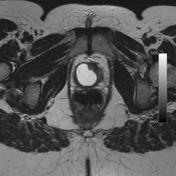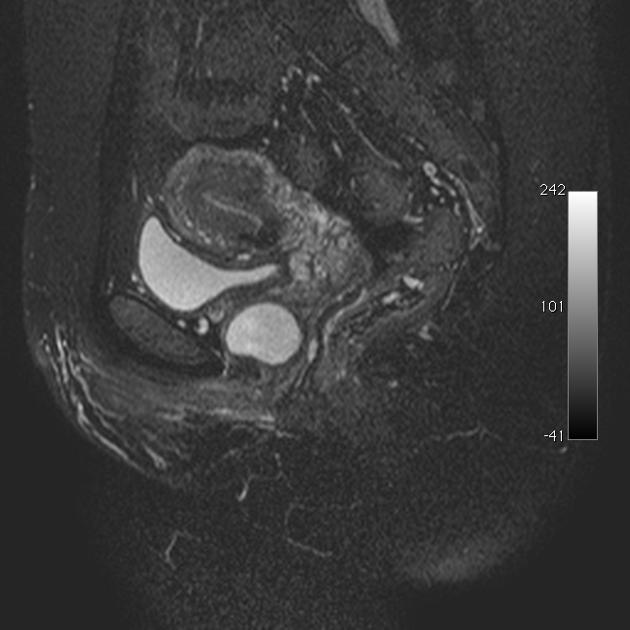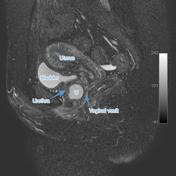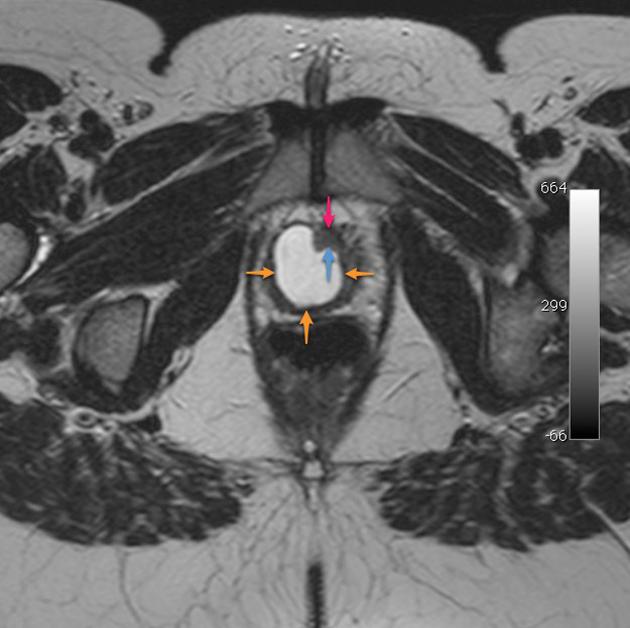Presentation
Recurrent infections of the urinary tract.
Patient Data





MRI of the pelvis demonstrates on the posterior side of the urethra a fluid-filled thin-walled structure. It appears to communicate the lumen of the urethra (best seen on the axial T2 images). The base of the bladder and the adjacent urethra are displaced.



Urethra (red arrow) appears to communicate (blue arrow) with the cyst (orange arrows).
Urethrocele (U) nestled between urethra anteriorly and vagina posteriorly.
Case Discussion
Cystoscopy confirmed the presence of a cavern on the dorsal side of the urethra, consistent with a urethrocele, which is probably the cause of the recurrent infections. Urethroceles are very common in women, seen in 1-6%, especially in women with urinary symptoms (e.g. stress incontinence).




 Unable to process the form. Check for errors and try again.
Unable to process the form. Check for errors and try again.